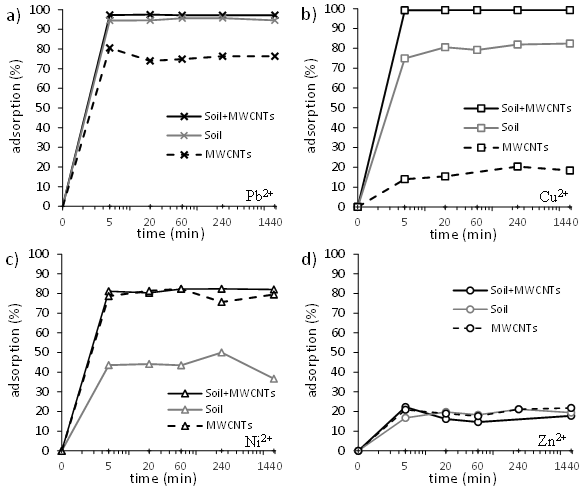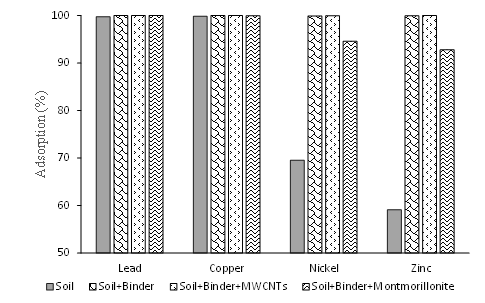This experimental work assessed the efficiency of different additives (MWCNTs, montmorillonite and Portland cement) to immobilize the heavy metals lead, cooper, nickel and zinc in a soil in conditions similar to a real case scenario (percolation tests). Carbon nanotubes and montmorillonite, have the potential to minimize Heavy metals mobility in contaminated soils and can be a valid alternative to the usual additive, Portland cement.
- contaminated soil
- heavy metals
- montmorillonite
- carbon nanotubes
- Portland cement
- percolation tests
The study revealed that even if the adsorption tests are a valid tool to evaluate the performance of the additives, only percolation tests can take in consideration the influence of the soil’s properties, reproducing in a better way the conditions of a real field situation.
Since all the options studied in this work revealed to be technically efficient in the immobilization of heavy metals in soils, it may be concluded that MWCNTs and montmorillonite are a valid alternative to the traditional addition of Portland cement even when tested in conditions similar to a real case scenario, unless stabilization of the soil is also required. The designers’ and decision-makers’ choice of the best additive will depend mainly on the environmental-economic compromise.


